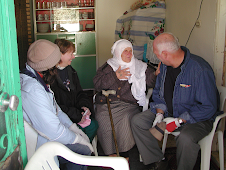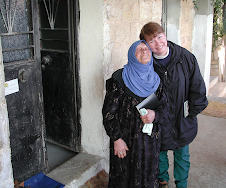We had an interesting visitor at the center this week. A loon, apparently on its way north. Here is what Rick, who cares for all of the center's animals, had to say:
The loon was brought in from the Atlanta airport by the Aviation Authority. It had landed on a runway. Apparently this happens sometimes where the loon mistakes the runway for water. They can only take off from water and need about a football field's length to run across as they take off.

It had some abrasions to its feet and wings, so we put some topical antibiotics on.
Two rehabbers on the coast gave me some very important information regarding this species. Because their legs are so far back on their bodies, they have to lie in a donut-shaped towel if they're in a carrier or they will quickly get sores on their keel as they can't hold it up. Also, they will lose the waterproofing of their feathers if they don't have constant clean, refreshed water, so the kiddie pool was not a good solution long term.
It didn't eat any of the fish I tried (as far as I can tell). I took it to a private lake today and released it and it appeared very happy to be free.
I was totally taken aback at how aggressive (defensively) it was! It would go out of its way to come after you if you pressed its space. Worse bird I've dealt with in that respect. Worse than any raptors! Whod've thunk it??
What a beautiful haunting cry they have. They are also very beautifully colored and marked when in their breeding plumage.The injured loon was either young or not in its breeding plumage.
There are many loon fans who go to the northern states in order to see/hear them in the wild. I have a friend who lies in the Adirondacks in loon country and he was talking to some loon revelers once and he told them, "I shoot them and eat them!" They were horrified and one asked, "What do they taste like?" He replied casually, "They taste like Bald Eagles!"
I'm glad to know that Rick released the loon. Its sad call, repeated often, seemed to be searching for its flock or at least another of its kind. I hope that it has joined other loons and is winging its way north.
LOONY FACTS:
Starting with the name: The bird's name MIGHT have come from its eerie yodel, especially when heard on moonlit nights. Some of its calls resemble crazy laughter, hence "loon" as we think of strange persons. And the word "lunatic" originally referred to a person who became deranged by sleeping in moonlight (luna = moon). Maybe families huddled in their safe, tightly closed cottages heard weird cries in the night and imagined lost souls wandering around a lake howling and laughing.
Common Loons dive and fish underwater, catching their prey and swallowing it, aided by backward-facing sharp knobs in their mouths that prevent escape of the intended dinner. They can stay under water for almost five minutes while fishing.
The Common Loon is Minnesota's state bird.
You might hear one of four calls from the loon: the tremolo, like maniacal laughter, is an aggressive one; the wail, a lonely-sounding long call; the hoot, used to communicate among parents and offspring; and the yodel, made by males defining their territory.
In the summer, loons are speckled black and white with a blackish, iridescent-green head. Their bills are black and their eyes are red. The red eye helps the loon see underwater. Winter colors are gray and white, like the loon which visited CMNC.
Both parents sit on the nest and care for their one or two babies. The young can leave the nest after just a day, but can't fly for two months. The parents often carry their offspring on their back to protect them from predatory fish and turtles in the water.
Their menu includes fish, frogs, leeches, crayfish, mollusks, salamanders and insects.
Young loons are on the menu of skunks, raccoons, foxes, snapping turtles, northern pike and muskies. Only the bald eagle is likely to eat the adults.
Loons have solid bones, unlike most birds whose bones are hollow. The extra weight helps them dive for food but, because their bodies are heavy relative to wing size, they need a 100 - 600-foot "runway" to take off from a lake. Once up, they can fly faster than 75 miles per hour.
Loons may live for more than 30 years.


























That's really cool. Thanks for sharing! :)
ReplyDelete